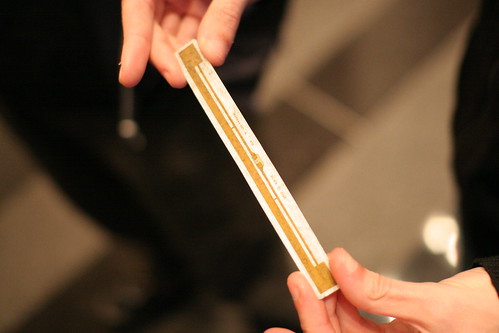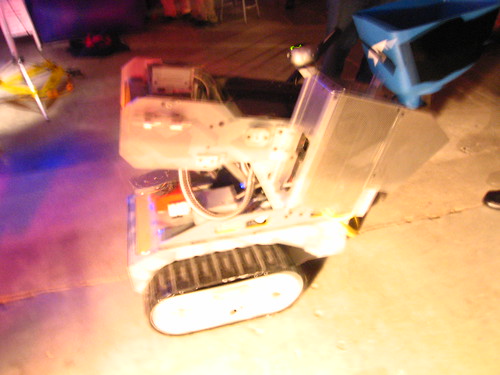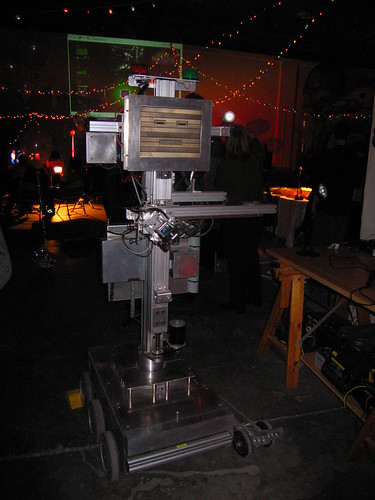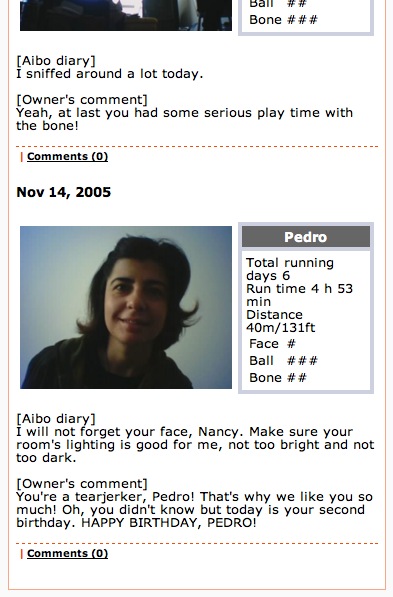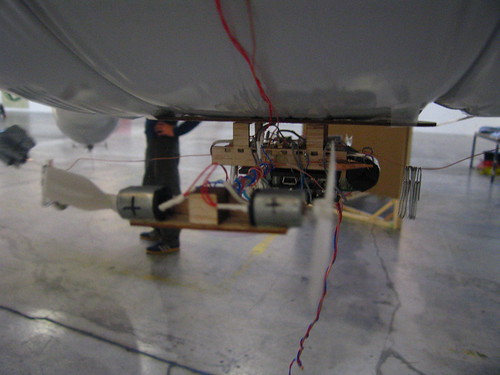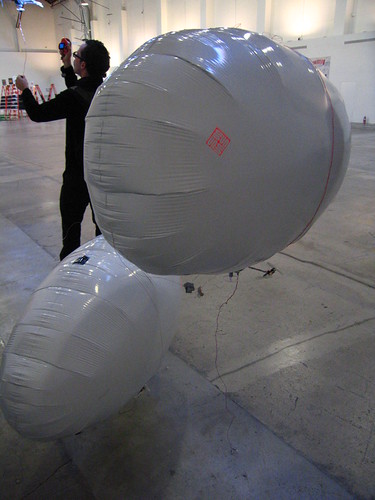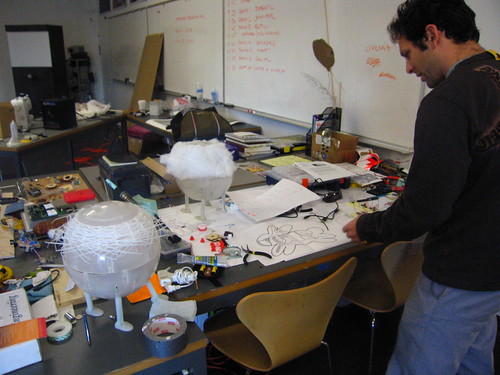I started piling up references, links, papers and so forth — my harvest of material on the topic of mobile social software — in a bid to steel myself for the preparation of a short point-of-view document on the topic and to help pour some concrete into the frame I’ve built around this blogjects topic so as to address it at the Lift conference and workshop in February.
And I’ve been feeling guilty about not capturing my thinking in the blog. (I have been doing lots of sketching in the Moleskine, though..)
Where do you begin when trying to articulate a POV on MoSoSo?
Taxonomies? Project descriptions? Literature review? My own projects and a historical sort of sketch of what I’ve done and some reflection on why I did it?
Taxonomy
Spatial annoatation
* Socialight
* Yellow Arrow
* Etc.
Proximity-based interaction
* Nokia Sensor
* Mobiluck
* Love Getty
* Pantonic
* PlaceSite
* 6th Sense
Presence Awareness
* Dodgeball
* Street Hive
* Mologogo
Spatial annotation: mark the heck up out of geographic space with “virtual” notes that are coded with geographic coordinates and slurped up by the mothership repository so that they enter into the Internet of Things. Tag locations with descriptions, metadata, coordinates, media, etc. Whimsically and creatively — as in Streetmemes — and also for the sake of efficiency. One can imagine an easy-to-use system for municipalities that allows workers or even ordinary residents to annotate places where, for instance, there’s a water main leak or a cracked sidewalk.
Proximity-based interaction: I myself think of this as interaction that is based upon the physical proximity amongst things — people to people, people to things, things to things. Where does the range cut off? Maybe at no point — but the interaction syntax relies on an explicit consideration of geographic distance. Oftentimes the scenario uses a short-range RF system like Bluetooth, and so the range is limited by the constraints of the technology. In some cases, like Placesite, the system uses WiFi together with a software + router system that only allows those within the WiFi’s LAN to access the local, place-specific content, which is often, at least, profiles on currently logged on users. WiFi.Bedouin, WiFi.ArtCache and NetMagnet used a similar sort of strategy — relying on WiFi’s built-in range constraints as part of the interaction syntax.
Remarks On Proximity-based Interaction
Considering nearness in geo-spatial terms brings into play the dynamics of how space is occupied by social beings. What are the social practices that occupy physical space? What are the social practices that use relations of physical distance as a parameter for communication, sharing, playing, engaging (in activities, stopping, perambulating, making a diversion from a path, logging, ruminating)? What about not in an urban setting? What about how space is occupied by social beings in non-congested areas? Or during a commute? There are several examples of proximity interaction used as a dating “love getty” scenario — what else? Like..for those who have already gotten love? What about in pragmatic, non-explicitly playful scenarios? How do mobile social beings relate to space and proximity in other idioms?
Presence awareness: Killer app du jour? This interaction scenario makes for fun thinking. It’s a register of social communication and projection of one’s “presence” (of mind, of physical body, of ability to engage in another register of communication..) to one’s relevant social network. It’s the explicit, digital form of reaching out and calling someone, without having to do a whole lot of talking. And sometimes..that’s all you need. (I myself am not a big phone talker, but txt like a teenager.)
Applications that operate within this taxonomy become “social” because they are used to establish, maintain, and manage social formations or to, in some fashion, circulate culture.
They are “mobile” because you do them when you are untethered, out-and-about in the world of things, objects, other people, crowds, mass transit, etc..
(There’s a somewhat unspoken bias in MoSoSo that fetishizes urban experiences. I do that myself, to a fault. I mean, by most empirical accounts, cities are growing at an alarming pace — one that is certainly unsupportable by the existing infrastructures. I think this is a yield toward creating experiences that can be supported by critical mass of users, so that a community is created, so that a buyout or acquisition can be written into the business plan.)
Why is MoSoSo a topic worthy of consideration? Could it be that the alpha geeks are growing weary of doing their thing while tethered to a power plug? Is it becuase architects and urban planners got into the mix because they wanted to be digital and alpha geeks, too? And their occupations depend upon creating social, lived experiences as articulated by space? And if the occupants of that space are indoctrinated into the practice of networked social relations and an Internet of Things, then the thoughtful architect or designer with foresight might consider how movement/motility can leverage those practices?
Why are people hopped up by MoSoSo? Frontierism, certainly. The headaches feel like those I felt back in the mid-late 1990s when you had to build the same content in a dozen different ways to support different browsers, different bandwidth, different browser versions.. Mobile apps, particularly mobile phone apps, require the same kind of diligence (patience..) and are often determined by what carrier supports what technology supports what application set. Otherwise, you loose your audience, and then you loose your acquisition end-game.
When we built PDPal, I had a vague idea that I was building a mobile social software application, although I didn’t know that’s what people would end up calling it. I also didn’t know how deflating it would be when Palm users simply weren’t interested — they used their Palms for, you know — calendaring, scheduling and Vindigo. Vindigo was the mobile app du jour at the time. It still may be. But there was nothing SoSo about Vindigo — you got the listings you got. I thought that a Vindigo that was community created was the real killer mobile app. There was no way that Vindigo was going to have that killer, off-the-hook Vietnamese joint in Queens that was buried down in the barely legible food fanatics web site Chowhound.com.
Combining mobility with sociability is an exciting proposition. One area that I think has yet to be explored is tapping into the Familiar Strangers paradigm, but not so much for the anonymous, yet perhaps informed, meet-up where you’ve coded in your “parameters” that are expected to resonate with a complete strangers parameters because they happen to be nearby. I’m thinking about the Familiar Strangers paradigm that happens “later” when you reflect upon your day by looking at the intersections your paths have taken you on with familiar, even new, events, people, activiites and places.


